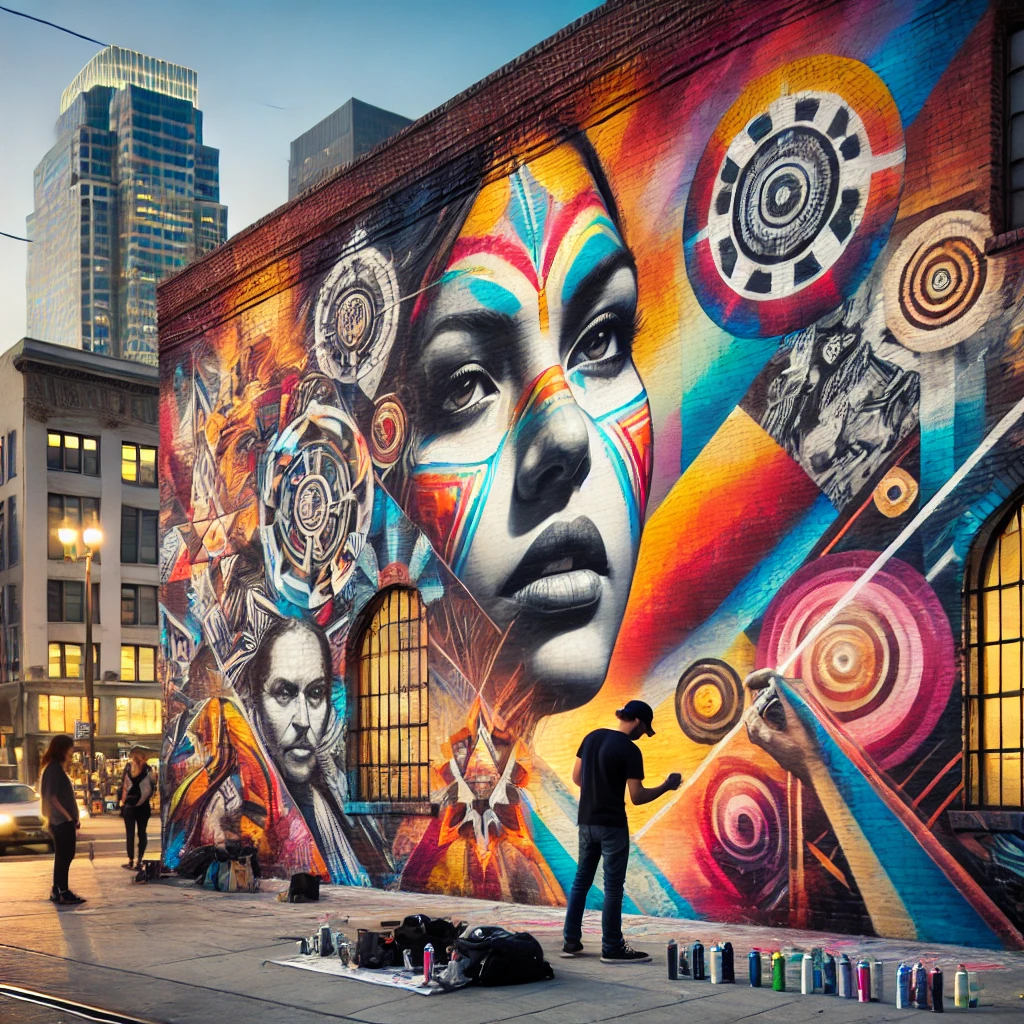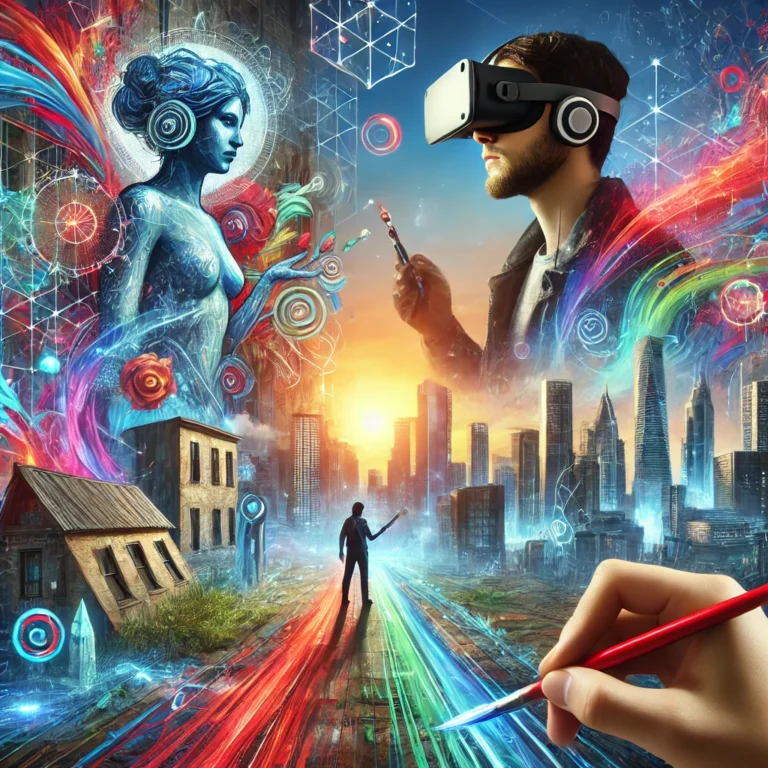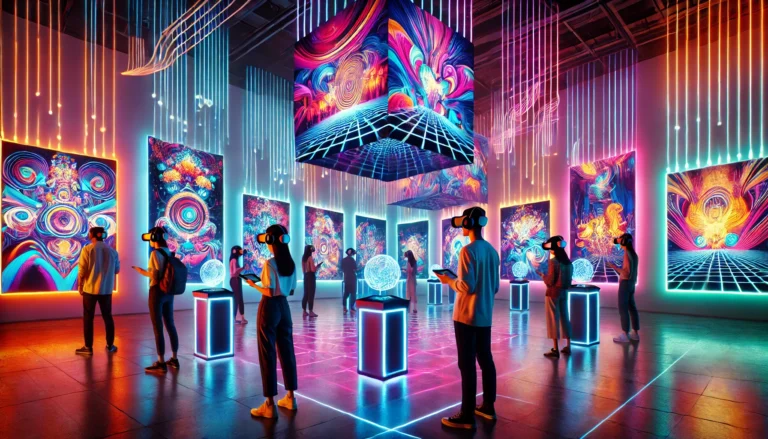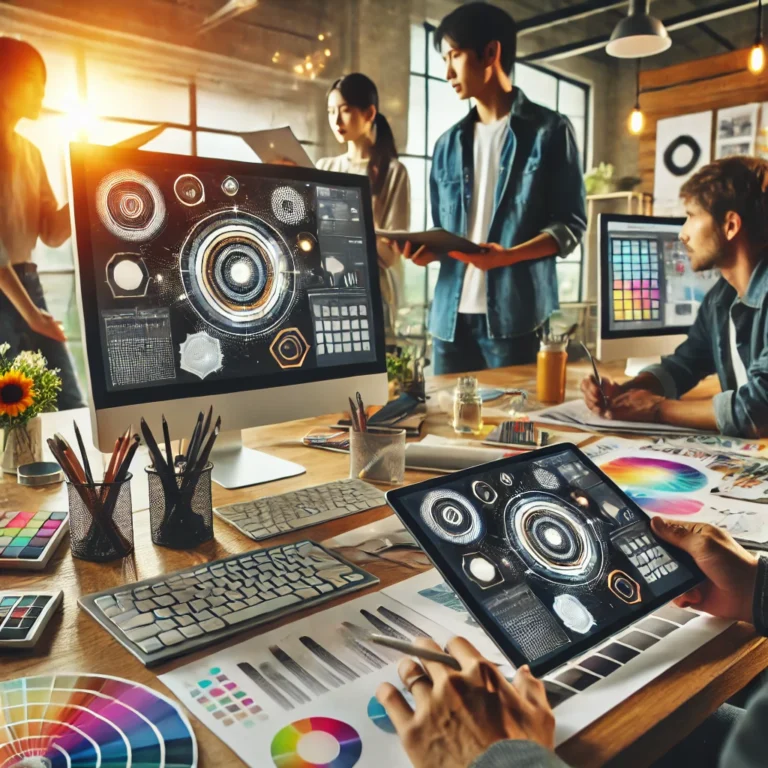Imagine stepping into a city where every wall whispers its own story. Every wall is a living gallery painted with bold hues and raw emotions. On one memorable afternoon, I strolled downtown and felt immersed in this world. Bricks became canvases, and urban chaos turned into a symphony of color. As a Creative Director with a passion for art and design, I have witnessed how street art mirrors society. Moreover, it serves as a powerful vehicle for change. It also inspires young professionals to express their creativity. For more context on how street art influences urban culture, read this insightful article on Forbes: The Rise of Street Art and Its Impact on Urban Culture.
The Evolution of Street Art
Street art began as a form of rebellion. Initially, it was unsanctioned. Then, it grew into a bold splash of individuality. I vividly recall my early encounters. I saw secret tags and cryptic messages in hidden corners. These felt like clandestine verses meant for a curious few. Over time, raw expressions evolved into sophisticated murals. Today, street art stands at the crossroads of tradition and innovation. For example, artists like Banksy have redefined public art. Consequently, their work sparks conversations on social and political issues. This transformation signifies a shift in mindset. Cities now embrace these vibrant narratives. For instance, an abandoned building can burst into life with a mural. For further insights on the history and impact of street art, visit Wikipedia: Street Art.
Cultural and Social Impact
Street art is more than a burst of color on a wall. It is a living commentary on our world. I once encountered a mural on a community center that addressed social justice. It spoke directly to the struggles and hopes of its viewers. In addition, street art transforms ordinary spaces into powerful narratives. It reflects cultural shifts and challenges societal norms. Like a symphony that harmonizes diverse instruments, it weaves together personal stories, political statements, and community voices. For example, murals that honor local heroes spark conversations about identity and inclusion. Furthermore, they inspire us to see public spaces as canvases of critique and celebration. To read more about how street art reshapes urban environments, check out this BBC Culture article: How Street Art Is Changing Cities.
Urban Aesthetics and Community Engagement
Imagine a forgotten alleyway that is transformed by a sweeping mural. This is the power of street art. It redefines urban aesthetics and fosters community engagement. I have seen neighborhoods reinvent themselves through art. Each block then tells a unique story. Moreover, street art bridges the gap between art and everyday life. It turns sterile concrete into dynamic public galleries. As a result, it creates spaces where creativity thrives. For instance, art festivals invite community contributions and spark dialogue. They even boost local economies by attracting tourism. Consequently, these initiatives celebrate ingenuity and foster community pride. Discover more examples of urban transformations on ArchDaily: Street Art on ArchDaily.
Controversies and Challenges
Street art also faces controversy. Its bold strokes can spark debates about legality and authenticity. I recall a local mural that was both celebrated and criticized. Some saw it as a masterpiece, while others deemed it a nuisance. Therefore, the challenge is to distinguish between art and vandalism. Often, this line is blurred. Street art sometimes tests social norms and legal frameworks. As a result, it raises questions about creative expression versus defiance. Moreover, the commercialization of street art brings its own dilemmas. For example, artists may feel pressured to conform to commercial expectations. In contrast, the rebellious spirit might then suffer. To learn more about the legal and social challenges of street art, read this analysis from The Guardian: Street Art, Vandalism, and the Law.
Technology and Social Media’s Role
Technology has become a megaphone for street art. I still recall a time-lapse video on Instagram that captured a mural coming to life. It left me in awe. Social media platforms now serve as digital galleries. They allow artists to share their work with a global audience. Consequently, fleeting street art becomes a lasting digital memory. For example, interactive maps highlight hidden artistic gems in cities. Moreover, live virtual tours offer behind-the-scenes insights into mural projects. These technological innovations bridge the gap between the tangible and the virtual. For more information on how social media is reshaping the art world, check out this Forbes article: How Social Media Is Redefining the Art World.
Future Trends in Street Art
The future of street art is bright and full of innovation. Picture augmented reality (AR) transforming a static mural into an interactive experience. With your smartphone, you could reveal hidden layers or animations. This exciting fusion of technology and creativity pushes the boundaries of art. In addition, sustainability is becoming a transformative trend. Eco-friendly materials and practices are emerging in urban art. For example, murals may soon be created with biodegradable paints. Consequently, installations might incorporate recycled elements to express environmental responsibility. The coming years may see more community-driven projects. They will empower residents to shape their neighborhoods. For more on the future trends of street art, visit Dezeen: Street Art on Dezeen.
Visuals and Media
Visuals play a key role in capturing the vibrancy of street art. High-resolution images of iconic murals can enhance your understanding. Detailed close-ups of spray-paint techniques also add depth. Moreover, before-and-after shots can show urban transformations. Consider embedding time-lapse videos that capture the creative process. You might also include interactive slideshows that let users explore art from different angles. Infographics such as timelines or maps can provide valuable context. Furthermore, short documentaries with artist interviews add a personal touch. For inspiration on the best street art visuals, check out this guide on Timeout New York: The Best Street Art in New York.
Conclusion
In conclusion, street art is more than decorative art. It is a powerful narrative that captures cultural evolution. From its rebellious beginnings to sophisticated murals today, street art challenges and inspires us. It transforms urban landscapes and invites us to discover hidden potential. I encourage you to explore your local urban spaces. Let the stories on your city’s walls inspire your creativity. Just as every mural tells a story, so do you. To read more about the evolution of street art, visit this Artsy article: The Evolution of Street Art.
Audience Engagement
Engaging with street art is interactive and fun. Consider joining local art walks or community mural projects. These events help shape the artistic landscape. Additionally, interactive elements such as polls and live Q&A sessions with artists can make your experience more engaging. You might even try virtual tours to explore urban creativity. Please share your own street art discoveries on social media. Use a dedicated hashtag to join the conversation. Ask yourself, “What does this mural remind me of?” or “How has street art influenced my view of my neighborhood?” For ideas on upcoming street art events and community projects, explore Eventbrite’s listings: Street Art Events.
Street art continues to evolve, innovate, and inspire. Embrace the energy, explore the stories, and let your creativity take flight on this ever-changing urban canvas.








